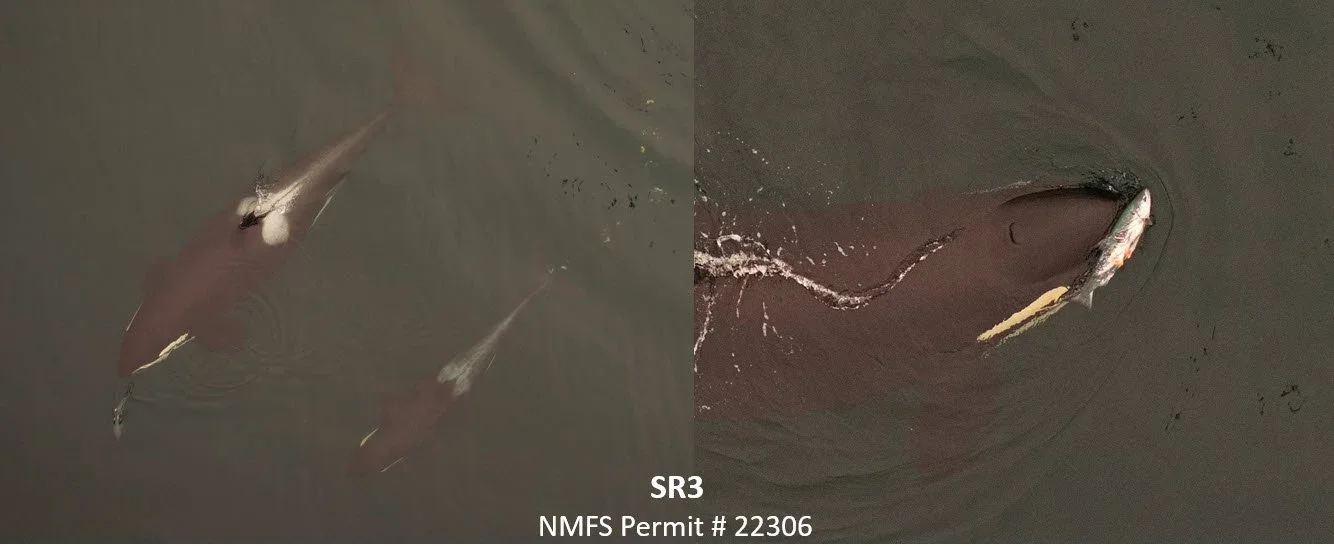Seasonal health monitoring of SRKWs
The SR3 team successfully collected aerial photogrammetry images of Southern Resident killer whales (SRKWs) from J, K and L pods in September and October to extend their health monitoring into the 17th year! Analysis of these images is currently underway and the team will continue collecting body condition data from SRKWs into the winter months to better understand how SRKW condition changes seasonally. SRKW body condition has been found to vary by pod and September SRKW body condition has been correlated with tributary and area-specific indices of Chinook salmon abundance. Specifically, the strongest relationship was found between J pod and Fraser River Chinook salmon, followed by L pod and Puget Sound Chinook salmon (read more here). However, the diet of SRKWs has been found to shift in autumn and winter months, with a higher proportion of coho and chum salmon found in their diet during this period (read more here). SR3’s SRKW health monitoring will continue to provide quantitative measures of SRKW body condition throughout the year to help identify links between body condition and seasonal foraging patterns. These updated SRKW health metrics will be provided to management agencies in both the U.S. and Canada to help inform management actions aimed at ensuring that SRKWs have an adequate supply of prey year-round.
Aerial images of Southern Resident killer whales showing J35 and J57 during a chase (left) and capture (right) of a coho salmon in October 2024. Images collected non-invasively using a remotely operated drone flown at an altitude of > 100 ft under NMFS permit # 22306.

